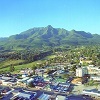OPINION - The article 'Are EIAs protecting the Garden Route' (Knysna-Plett Herald, 31 July and George Herald, 12 August) raises critical concerns about the effectiveness of environmental impact assessments (EIAs) in safeguarding the Garden Route’s unique ecosystems. It highlights systemic issues, such as conflicts of interest, inadequate professional oversight, and a mechanistic approach to EIAs, which undermine their purpose.
But are EIAs designed to be a tool of protection?
EIAs are designed to ensure that development decisions are informed, transparent, and balanced, protecting both the environment and human well-being. It is incorrect to state that the National Environmental Management Act, Act 107 of 1998 (Nema) requires that development must be socially, environmentally and economically sustainable.
The Preamble of Nema states that:
• the State must respect, protect, promote and fulfill the social, economic and environmental rights of everyone and strive to meet the basic needs of previously disadvantaged communities;
• sustainable development requires the integration of social, economic and environmental factors in the planning, implementation and evaluation of decisions to ensure that development serves present and future generations.
Nema is clearly not focused on protection of the environment in the first place, but aims to integrate environmental, social and economic factors in decision-making - the so-called three pillars of sustainable development.
This is very much true for the Garden Route many remember as “pristine”, but that has long been shaped by human activity.
George and Knysna were surrounded by commercial plantations, private and state-owned, with their economies relying on tree production. Farms in the Garden Route produced vegetables, dairy, meat and timber. Farming methods were more primitive in the past, resulting in a mosaic environment that created a pretty landscape. Farms had wattle, blue gum and pine trees to provide fuel, poles and wind protection for crops. Much of what is now mapped as Garden Route Granite Fynbos and other fynbos types were under cultivation or pasture a few decades ago.
Recent changes in the Garden Route largely stem from policies introduced up to about 30 years ago.
The removal of a law prohibiting development within 5km of the sea changed the landscape forever.
Memory of the details of this law are long gone, but its removal paved the way for golf estates and other development right up to the beaches and coastal functional zone. Tree plantations, once valued for supporting the economy and protecting indigenous forests from utilisation, were reclassified as invasive species.
Farmers responded by exchanging windrows by trees for poles and plastic shade netting.
Additionally, with major food processors like McCain leaving George, vegetable farms shifted to berry cultivation, increasing the use of shade structures.
Plantation forestry became the curse of the land. This resulted in large areas - such as those between Victoria Bay and George - to be transformed from plantation to urban development.
The Witfontein Forest adjacent to the suburbs of George has been earmarked for future urban expansion of George. As in Tokai Forest, not even the cultural landscape which shaped George is regarded as valuable for protection.
EAPs are often blamed for the degradation we see today. Yet, they are required to work within legal frameworks and policies that prioritise economic and social needs - especially when landowners can no longer sustain themselves through farming or forestry. In such cases, development is often viewed as the most viable alternative over protection of a degraded environment.
The qualities of beautiful lakes change over time, because well-managed plantations and region-specific farming are being replaced by resorts and industrial farming, driven not only by policy and industry, but also by public demand and silence.
Project focused EIA alone cannot stop this trajectory. The real question is: are we, as residents, willing to take responsibility? Do we hold Government responsible to assess the impacts of policy change?
Blaming environmental practitioners will not restore our forests or protect our wetlands. Change will only come when communities organise, speak up, and support local groups fighting to preserve what remains.
With growing plans to merge George and Mossel Bay into a large urban hub, the pressure on the eastward towns will only increase.
If we care about the future of the Garden Route, we must act now. The power lies not only in government policy or professional reports, but in public action and accountability.
(Desireé du Preez, an environmental assessment practitioner from George, is a registered scientist of the South African Council for National Scientific Professions (SACNASP) and chairperson of the Garden Route Dam Action Group in George.)
‘We bring you the latest Garden Route, Hessequa, Karoo news’
















